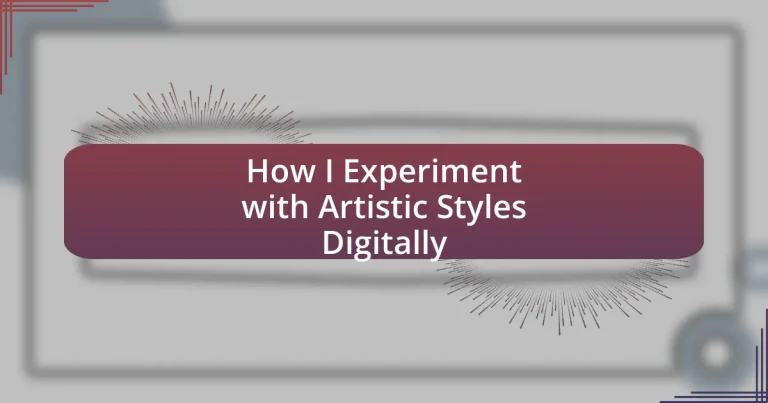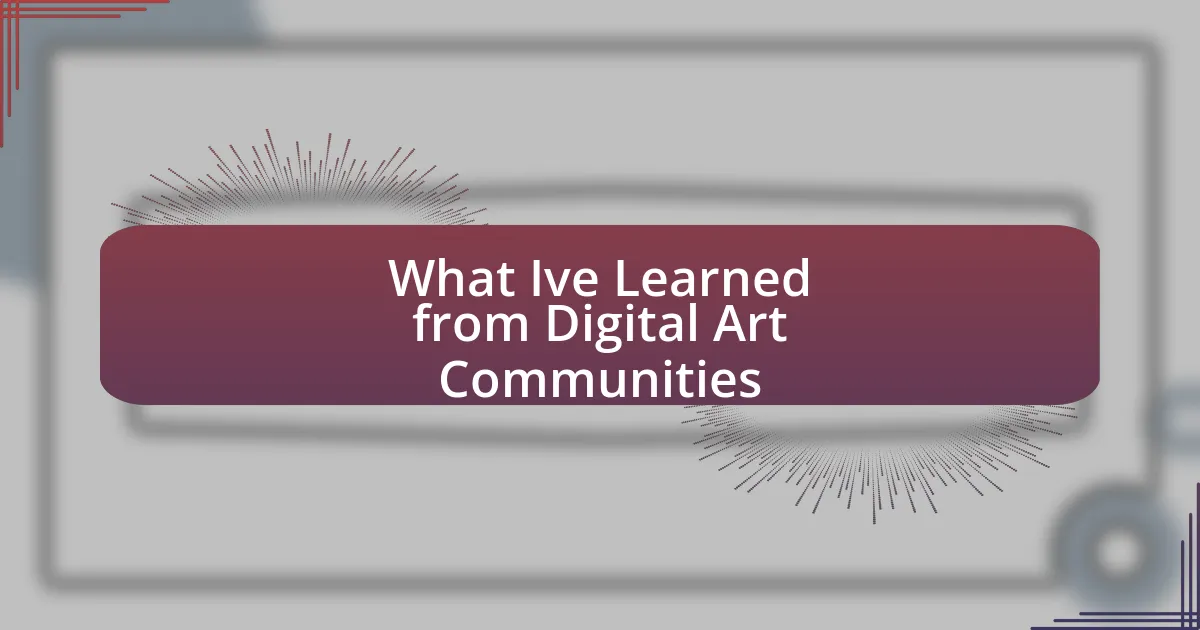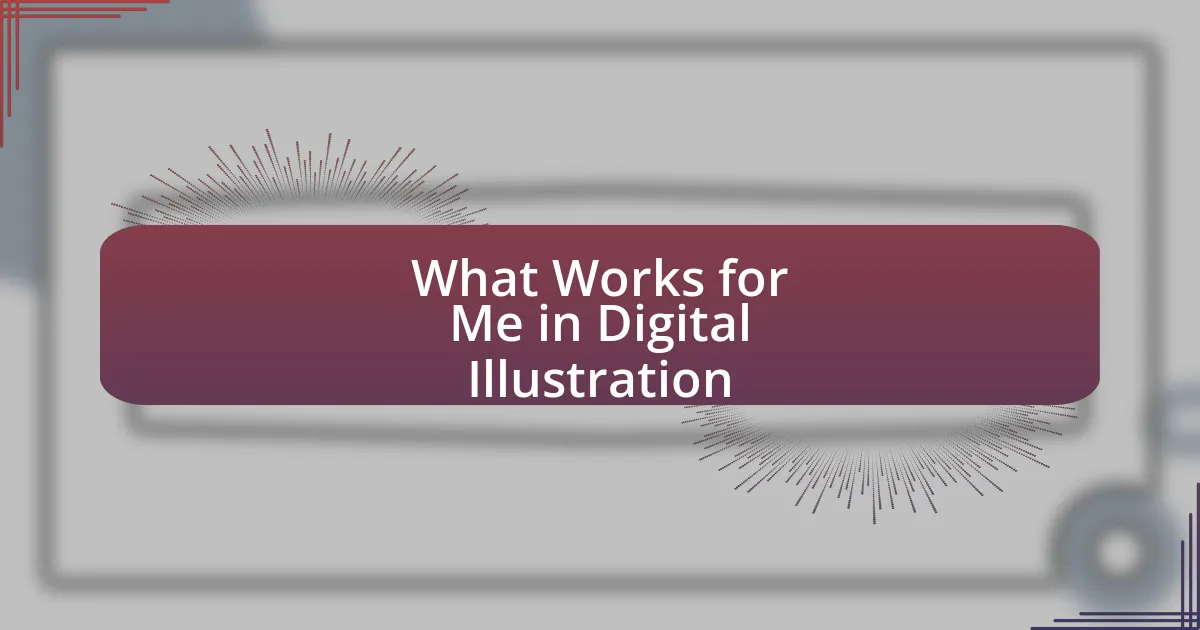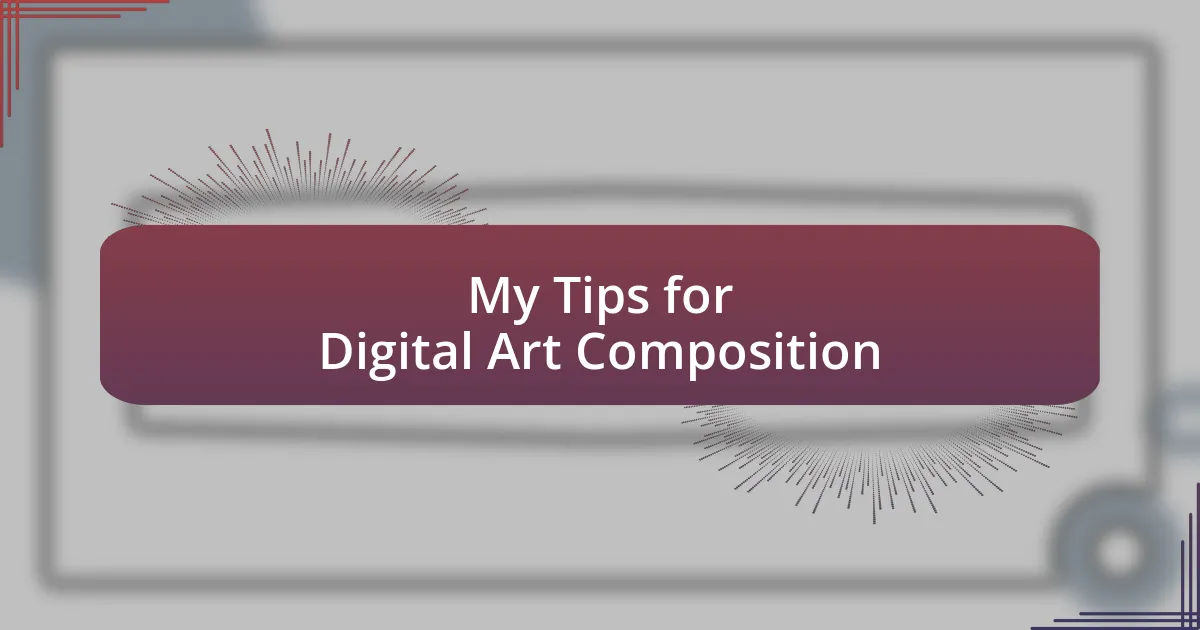Key takeaways:
- Digital artistic styles blend tradition and innovation, encouraging experimentation and emotional expression.
- Using various digital tools can inspire creativity, transforming the artistic process into one of exploration rather than strict mastery.
- Mixing traditional and digital art enhances depth and allows for unique expressions through different mediums.
- Sharing artwork and engaging with feedback fosters connection and growth, leading to a deeper understanding of one’s artistic journey.
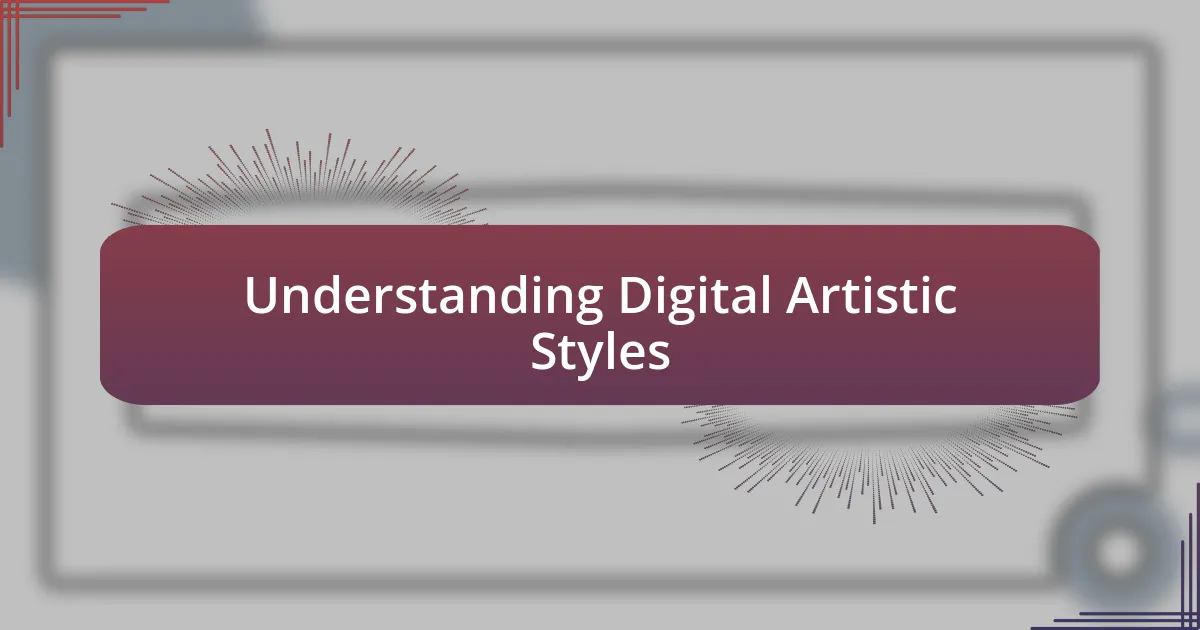
Understanding Digital Artistic Styles
Digital artistic styles are a fascinating blend of tradition and innovation. I remember the first time I experimented with a watercolor effect in a digital painting. The feeling of watching vibrant colors blend on the screen was exhilarating, evoking childhood memories of painting on paper. Isn’t it amazing how technology can mimic those traditional techniques so effectively?
When I explore different styles, I often reflect on the emotions each one evokes—like the difference between a bold, graphic approach and a softer, painterly style. For instance, using a minimalistic approach in some artworks has taught me the power of simplicity; it leaves room for viewers to interpret the piece in their own way. Have you ever noticed how much the emotional tone changes with just a shift in style?
Understanding digital artistic styles requires not only technical skill but also a willingness to embrace experimentation. There’s joy in blending styles, creating a hybrid that’s uniquely yours. I find myself constantly asking, “What if I combine this with that?” and the thrill of discovery is what keeps my creative spirit alive. Each experiment adds a new layer to my understanding and appreciation of digital art.
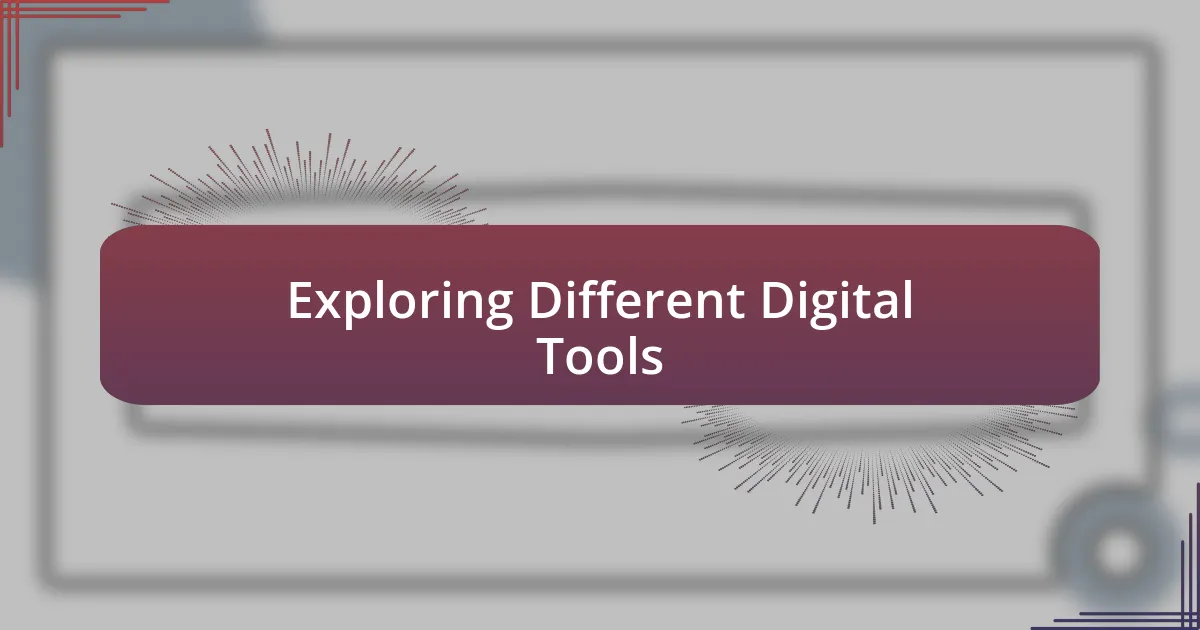
Exploring Different Digital Tools
Exploring various digital tools has been a game-changer in my artistic journey. I remember the first time I downloaded Procreate; the sheer array of brushes available made my heart race. I dove into experimenting with different settings and adjustments, unlocking a world of creativity I never knew existed. Each tool, like a painter’s brush, carries its own personality and potential.
- Procreate: Offers an extensive range of brushes and intuitive features for fluid drawing.
- Adobe Fresco: Great for mimicking traditional media, like oils and gouache, providing a unique blend of styles.
- Krita: An open-source program that focuses on illustrations and concept art, known for its customizable brushes.
Using these tools, I’ve learned to let them inspire my creativity rather than diminish it. Just as I once strived to master a single style on traditional canvas, I’ve realized that digital artistry is more about playing and discovering. The interactions between the tools and my imagination often lead to unexpected bursts of inspiration, creating pieces that resonate deeply with me.
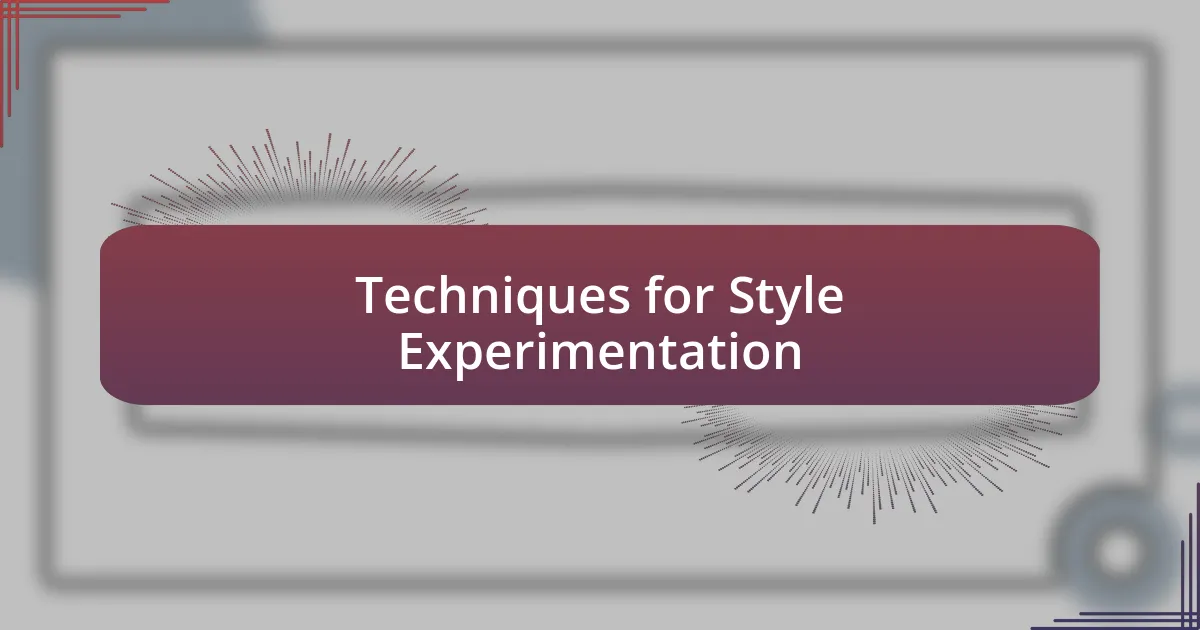
Techniques for Style Experimentation
Techniques for experimenting with artistic styles digitally can vary greatly, but I’ve found that a few key methods can lead to remarkable discoveries. One technique I often use is layering—applying different colors and elements in separate layers allows me to experiment without losing my original designs. This also enables me to play with transparency and blend modes, which can create stunning visual effects I hadn’t anticipated while sketching.
I often find joy in creating mood boards. When gathering inspiration from various sources, I combine styles that speak to me. For instance, one day, I combined the soft pastels of contemporary visual art with the bold lines of comic book styles. The process of blending these influences not only broadened my creative scope but also reflected an emotional landscape I wanted to convey.
Another effective technique involves setting strict limitations when creating. I challenge myself with a color palette or a specific brush—that constraint often sparks innovative solutions I wouldn’t have explored otherwise. I vividly recall a time when I restricted myself to only using earth tones; the result was a warm piece that felt both inviting and grounded, showcasing how limitations can fuel creativity rather than hinder it.
| Technique | Description |
|---|---|
| Layering | Using multiple layers to apply colors and elements separately, allowing for easy modifications and creative effects. |
| Mood Boards | Gathering various inspirations and blending styles to create a unique amalgamation of influences. |
| Creative Constraints | Setting limitations, like color palettes or specific tools, to inspire innovative solutions in artwork. |
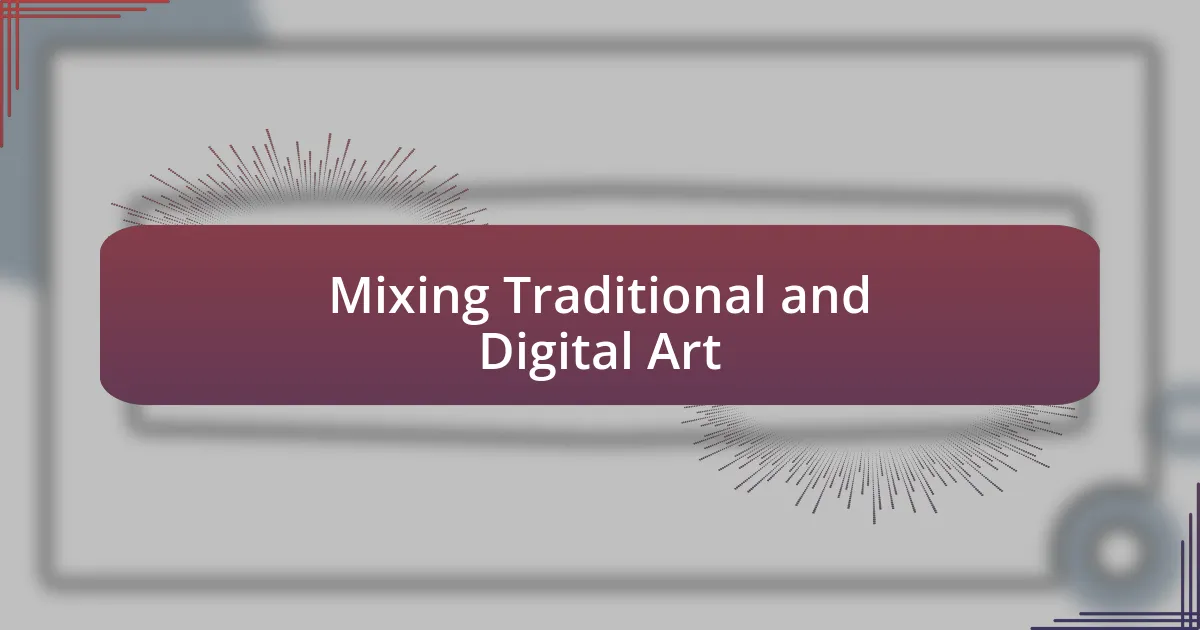
Mixing Traditional and Digital Art
Mixing traditional and digital art has truly transformed my creative process. I remember the first time I scanned a watercolor painting into my digital workspace. To my surprise, I could add layers of texture and depth that enhanced the original piece, revealing nuances I hadn’t seen before. Have you ever felt that moment when a medium surprises you with its possibilities?
There’s something magical about the tactile nature of traditional art that I always want to preserve. When I create a mixed-media piece, I often start with physically painted backgrounds. After that, I overlay digital elements, like graphic designs or vector illustrations. This combination creates a unique dialogue between the two styles, allowing me to express ideas and emotions in new, dynamic ways. How do you feel when working across different mediums?
Sometimes, I take it a step further by incorporating actual textures into my digital work. For instance, once, I used a piece of crumpled paper as a digital texture to overlay a landscape painting I had created with oil pastels. This cross-pollination of mediums not only brought depth and interest to my work but also made it feel more authentic. It’s amazing how these handcrafted elements bridge the gap between traditional and digital realms, isn’t it?
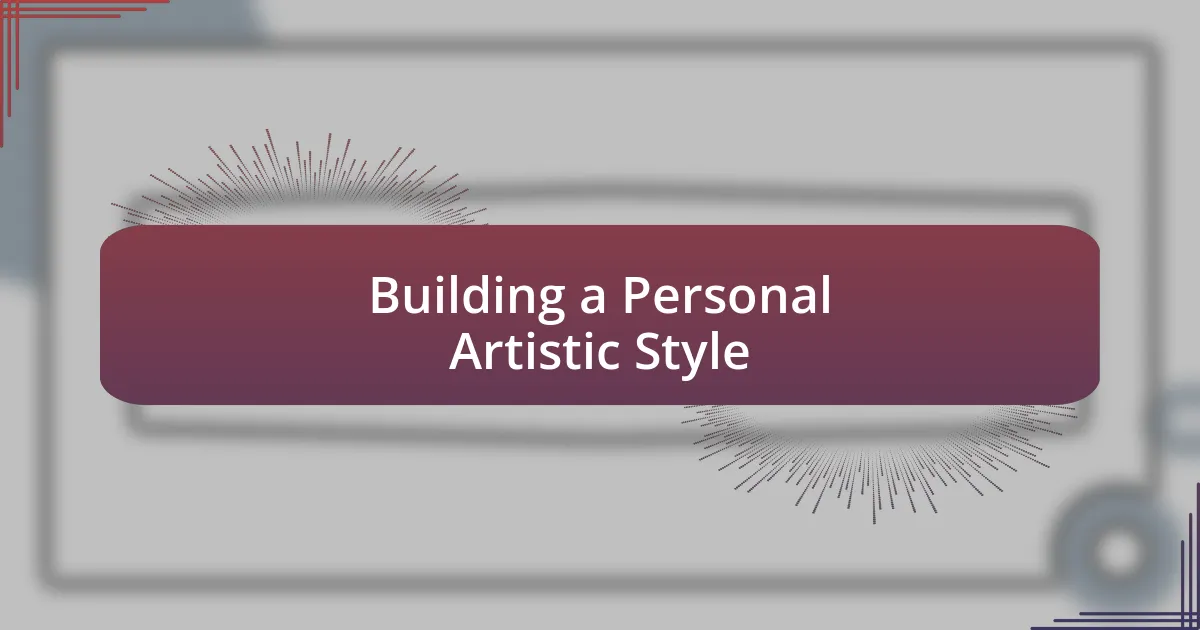
Building a Personal Artistic Style
Building a personal artistic style is a journey that blends experimentation with self-discovery. I vividly recall the days when I would explore various techniques, from ink washes to digital brushes, trying to find what truly resonated with me. With each attempt, I learned to embrace both the successes and the failures. Have you ever had a moment where your art felt like a true reflection of who you are?
As I experimented, I noticed how certain color palettes consistently drew me in, creating a sense of harmony in my work. For example, I once realized that soft pastels not only made me feel calm but also became a staple in my pieces. This realization set me on a path where I started to consciously incorporate those soothing hues into my projects. Has there been a color or theme that you just can’t seem to shake off in your work?
Over time, I developed a technique that combines my love for storytelling with visual elements. I often use narrative prompts to inspire my digital illustrations, which adds a layer of meaning to my art. One piece, inspired by a favorite childhood story, reminded me of how powerful it can be to translate personal experiences into visual form. Have you thought about how the stories you tell through your art contribute to your unique style?
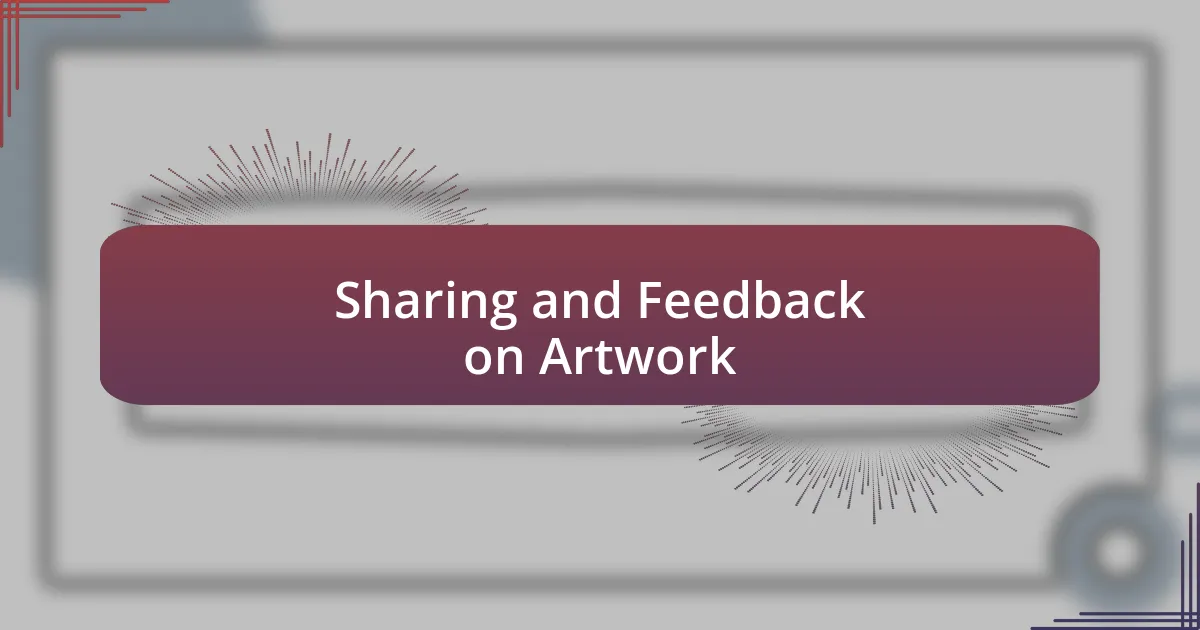
Sharing and Feedback on Artwork
Sharing my artwork has always been a pivotal part of my creative journey. When I post a piece online, I genuinely anticipate the feedback from friends, fellow artists, and even strangers. One time, I shared a digital painting that I was particularly proud of, and the constructive criticism I received helped me refine my technique in ways I hadn’t considered. Have you ever felt a mix of excitement and anxiety when you put your work out there, wondering how it will be received?
Engaging with feedback is like opening a door to new perspectives. I remember a time when a fellow artist pointed out an overlooked imbalance in a composition of mine. That small detail transformed my understanding of visual harmony, making me realize that every piece of feedback, whether positive or negative, can be a stepping stone for growth. How do you handle critiques? Do you find them motivating or overwhelming?
Ultimately, sharing my work isn’t just about seeking validation; it’s about fostering connection. I often find that when I expose my process and ask for input, it sparks meaningful conversations with others who are navigating similar artistic paths. For instance, after discussing a recent piece, I discovered an artist who not only resonated with my themes but also had insights that enriched my creative process. Have you ever built a friendship through a shared love of art?

